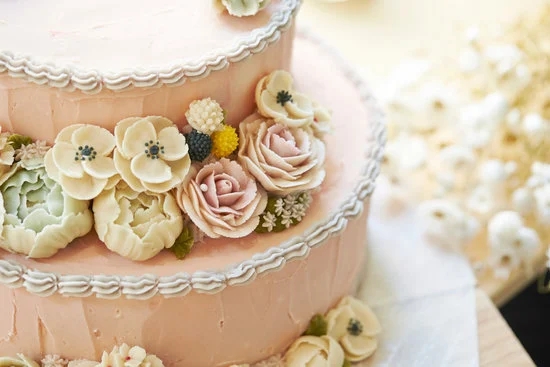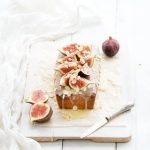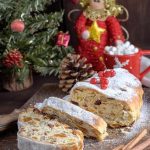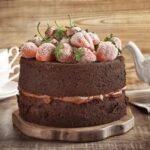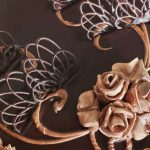Whipped cream is a versatile and essential component when it comes to decorating cakes, adding a touch of lightness, sweetness, and elegance to any dessert. It not only enhances the visual appeal of cakes but also elevates the overall taste experience.
In this article, we will explore how to make whipped cream to decorate cakes, providing you with valuable insights on choosing the right ingredients, step-by-step instructions for making whipped cream from scratch, and tips for achieving the perfect consistency for decorating.
When it comes to creating stunning cake decorations, whipped cream serves as a blank canvas that can be flavored, colored, and piped in various ways to suit different styles and occasions. Whether you’re looking to achieve intricate designs or simply add a dollop of creamy goodness to your favorite cake recipe, mastering the art of making whipped cream is essential.
From classic vanilla-flavored whipped cream to more adventurous options like chocolate or fruit-infused varieties, the possibilities are endless.
In the following sections, we will delve into the nuances of working with whipped cream in cake decorating, discussing tools and techniques for piping swirls, rosettes, and other decorative elements onto cakes. We’ll also address common issues that may arise during the whipping process and provide practical solutions to ensure that your whipped cream turns out perfectly every time.
Whether you’re a novice baker looking to enhance your skills or a seasoned pro seeking fresh inspiration, this article will guide you through the wonderful world of using whipped cream to adorn cakes with style and flair.
Choosing the Right Ingredients for Whipped Cream
When it comes to making whipped cream for decorating cakes, selecting the right ingredients is crucial to achieving the perfect texture and flavor. The main components needed for whipped cream are heavy cream, sugar, and sometimes vanilla extract for added flavor. It is important to use cold heavy cream straight from the fridge as this will help it whip up faster and hold its shape better.
Quality of Ingredients
Using high-quality heavy cream with a higher fat content (around 35%-40%) will result in a richer and more stable whipped cream. Avoid using ultra-pasteurized or low-fat creams as they may not whip up as well or hold their shape for decorating. Additionally, using fresh vanilla bean or high-quality vanilla extract can enhance the flavor profile of your whipped cream.
Sweetening Options
While sugar is typically used to sweeten whipped cream, you can also experiment with alternative sweeteners such as honey, maple syrup, or powdered sugar. Be mindful of the quantity used as adding too much sweetener can affect the stability of the whipped cream. Adjust the sweetness according to your preference and the flavors of the cake you are decorating.
By carefully selecting premium ingredients and sweeteners, you can ensure that your whipped cream not only tastes delicious but also performs well in decorating cakes. Experimenting with different options will allow you to customize your whipped cream to complement various cake flavors and create visually stunning designs.
Step-by-Step Guide on How to Make Whipped Cream From Scratch
Whipped cream is a versatile and delicious addition to any cake, providing a light and fluffy texture that complements the sweetness of the cake itself. Learning how to make whipped cream from scratch is not only cost-effective but also allows for customization in flavor and consistency. By following a few simple steps, you can create the perfect whipped cream to decorate your cakes with finesse.
Gathering the Ingredients
To make whipped cream from scratch, you will need heavy whipping cream, powdered sugar, and vanilla extract. Make sure that your whipping cream is cold as this will help it whip up faster and hold its shape better. The powdered sugar adds sweetness to the whipped cream while the vanilla extract provides a subtle flavor that pairs well with most cakes.
Whipping the Cream
Start by pouring the cold whipping cream into a chilled mixing bowl. Using an electric mixer on medium-high speed, begin whipping the cream until it starts to thicken. You can add in the powdered sugar and vanilla extract gradually as you continue to whip the cream. Be careful not to overwhip the mixture as this can cause it to become grainy or curdled. Aim for stiff peaks where the whipped cream stands up straight when the beaters are lifted.
Storing and Decorating
Once you have achieved the desired consistency, transfer your freshly made whipped cream into a piping bag fitted with a decorative tip. You can now use this whipped cream to decorate your cakes with swirls, rosettes, or any other design of your choosing.
If you have leftover whipped cream, be sure to store it in an airtight container in the refrigerator for up to 24 hours. Just give it a quick re-whip before using it again on another cake for that perfect finishing touch.
Tips on Achieving the Perfect Consistency for Decorating Cakes
Whipped cream is a versatile and delicious topping that can take your cake decoration to the next level. Achieving the perfect consistency is crucial in ensuring that your whipped cream not only looks beautiful but also holds its shape when piped onto cakes. Here are some tips on how to achieve the ideal texture for decorating cakes with whipped cream:
- Chill your mixing bowl and beaters in the freezer for about 15-20 minutes before whipping the cream. This will help keep the cream cold, allowing it to whip up faster and firmer.
- Use heavy cream or heavy whipping cream with a high fat content (at least 30% fat) for best results. The higher fat content will result in a more stable whipped cream that holds its shape well.
- Avoid over-whipping the cream, as this can cause it to become too stiff and almost butter-like. Stop whipping once you reach soft peaks – the whipped cream should be smooth, light, and creamy.
Once you have achieved the perfect consistency for your whipped cream, you can then proceed to decorate your cakes beautifully. Whether you’re creating elegant rosettes, intricate borders, or playful swirls on your cakes, having the right consistency of whipped cream is key to achieving professional-looking results.
Remember, practice makes perfect when it comes to working with whipped cream for cake decoration. Experiment with different piping tips, techniques, and flavors to find what works best for you and enhances the overall presentation of your cakes. With these tips in mind, you’ll be well on your way to creating stunning cake designs using whipped cream as a versatile and delicious decorating medium.
Creative Ways to Flavor Whipped Cream for Different Cake Types
Whipped cream is a versatile and delicious topping that can enhance the flavor of any cake. While traditional vanilla-flavored whipped cream is a classic choice, there are countless ways to infuse this fluffy treat with a variety of unique and exciting flavors. Here are some creative ideas for flavoring whipped cream to complement different types of cakes:
- Chocolate Lover’s Dream: For chocolate cakes or desserts, add cocoa powder or melted chocolate to your whipped cream for a rich and indulgent topping.
- Citrus Zest: Brighten up fruit-flavored cakes with a hint of citrus by incorporating lemon or orange zest into your whipped cream.
- Coffee Infusion: Pair coffee-flavored whipped cream with mocha or espresso cakes for a sophisticated and caffeinated twist.
Experimenting with different flavor combinations can take your cake decorations to the next level and elevate the overall taste experience for anyone indulging in your creations. Whether you’re looking to add an extra layer of complexity or simply want to match the whipped cream to the cake’s flavor profile, there are endless possibilities to explore.
In addition to traditional flavors, don’t be afraid to think outside the box and try unconventional pairings like lavender-infused whipped cream for a floral touch or maple syrup for a cozy autumn feel. With a little creativity and experimentation, you can customize your whipped cream toppings to suit any occasion or theme, making your cakes truly stand out in both taste and presentation.
Tools and Techniques for Piping Whipped Cream Onto Cakes
Whipped cream is a versatile and delicious addition to cake decorating, bringing a light and airy texture that complements a variety of cake flavors. When it comes to piping whipped cream onto cakes, having the right tools and techniques can make all the difference in achieving beautiful and professional-looking designs.
One essential tool for piping whipped cream is a pastry bag fitted with a piping tip. The piping tip you choose will determine the design of the whipped cream on your cake, whether you’re going for simple swirls, intricate rosettes, or decorative borders. It’s also important to have a sturdy piping bag that can withstand the pressure of squeezing out the whipped cream without bursting.
In addition to a pastry bag and piping tips, it’s helpful to have a turntable to smoothly rotate the cake as you pipe on the whipped cream. This allows for greater control and precision in creating your desired decorations. If you don’t have a turntable, simply rotating the cake plate by hand can also work effectively.
| Tools for Piping Whipped Cream | Techniques for Piping Whipped Cream |
|---|---|
| Pastry bag | Practice proper pressure control when squeezing out whipped cream |
| Piping tips | Rotate cake on turntable for smooth application of whipped cream |
| Turntable | Experiment with different piping tips for varied designs |
By using these tools and techniques for piping whipped cream onto cakes, you can elevate your cake decorating skills and create stunning desserts that are sure to impress. Whether you’re decorating a birthday cake, wedding cake, or any other special occasion treat, mastering the art of piping whipped cream will allow you to add beautiful finishing touches that will delight both the eyes and taste buds of those enjoying your creations.
Troubleshooting Common Issues When Making Whipped Cream for Cake Decoration
Whipped cream is a versatile and delicious addition to any cake decorating repertoire. However, it can sometimes be tricky to get the perfect consistency and texture when making whipped cream for cake decoration. In this section, we will explore some common issues that may arise during the whipping process and provide helpful troubleshooting tips to ensure you achieve beautiful whipped cream every time.
One common issue when making whipped cream for cake decoration is over-whipping. This occurs when the cream is whipped for too long, causing it to become grainy and curdled. To prevent this, it is important to keep a close eye on the cream as it whips and stop as soon as stiff peaks form. If you accidentally over-whip your cream, you can try salvaging it by gently folding in some additional liquid cream to soften the texture.
Another issue that may arise is under-whipping, which results in a runny and unstable whipped cream that won’t hold its shape when piped onto cakes. To remedy this, simply continue whipping the cream until stiff peaks are achieved. It’s important not to rush this process, as patience is key to achieving the perfect consistency for decorating cakes with whipped cream.
Lastly, temperature can also play a role in the success of making whipped cream for cake decoration. Make sure your bowl and beaters are chilled before starting the whipping process, as cold equipment helps the cream whip up faster and more effectively.
Additionally, avoid using warm or heated ingredients, as they can prevent the cream from reaching its full volume. By keeping these troubleshooting tips in mind, you’ll be well on your way to mastering the art of making whipped cream to decorate cakes beautifully.
| Common Issue | Troubleshooting Tip |
|---|---|
| Over-whipping | Stop whipping as soon as stiff peaks form; gently fold in additional liquid if necessary |
| Under-whipping | Continue whipping until stiff peaks are achieved; be patient during this process |
| Temperature-related issues | Chill bowl and beaters before whipping; avoid warm ingredients for better results |
Inspiration for Decorating Cakes With Whipped Cream
Whipped cream is a versatile and delightful addition to any cake decorating project. Its light and fluffy texture can elevate the look of a simple cake into something truly spectacular. When it comes to decorating cakes with whipped cream, there are endless design ideas and trends to explore that can take your creations to the next level.
One popular trend in cake decorating using whipped cream is creating intricate floral designs. By using different piping tips, you can easily create beautiful flowers like roses, daisies, or peonies on top of your cakes. These floral decorations not only look stunning but also add a touch of elegance and sophistication to any dessert.
Another creative way to decorate cakes with whipped cream is by incorporating a variety of colors and patterns. You can achieve this by using food coloring to tint your whipped cream into vibrant hues or by layering different colored creams to create ombre effects. This allows you to customize your cakes according to different themes or events, making them truly unique and eye-catching.
One timeless design idea when it comes to decorating cakes with whipped cream is the classic rosette pattern. By simply swirling the whipped cream onto the cake in a circular motion, you can create a visually appealing design that never goes out of style. This versatile technique can be used for various occasions, from birthdays to weddings, making it a go-to choice for many bakers looking to add a touch of elegance to their desserts.
Conclusion
In conclusion, whipped cream is a versatile and essential component in cake decorating that adds a light, airy, and delicious element to any confection. By mastering the art of making whipped cream from scratch and incorporating flavors creatively, you can truly elevate your cakes to the next level. Whether it’s a classic vanilla whipped cream for a traditional cake or a unique flavored whipped cream for a special occasion dessert, the possibilities are endless.
Remember that choosing the right ingredients is crucial in achieving the perfect consistency for decorating cakes with whipped cream. From heavy cream to sweeteners and flavorings, each ingredient plays a significant role in the final outcome. Additionally, utilizing proper tools and techniques for piping whipped cream onto cakes will ensure precision and beautiful designs that will impress your guests.
Despite any potential issues that may arise when making whipped cream for cake decoration, knowing how to troubleshoot common problems will help you navigate through challenges seamlessly. Whether it’s stabilizing the whipped cream or adjusting its sweetness and texture, being prepared to tackle these obstacles will set you up for success in creating stunning cake decorations.
So don’t hesitate to experiment with different design ideas and trends when using whipped cream on your cakes – the results may surprise you.
Frequently Asked Questions
How to Decorate a Cake With Homemade Whipped Cream?
Decorating a cake with homemade whipped cream requires freshly whipped cream that is firm enough to hold its shape but still light and fluffy. To achieve this, make sure your whipped cream is well chilled before decorating the cake.
Use a spatula or piping bag to apply the whipped cream in desired designs, such as borders, rosettes, or swirls. You can also add food coloring or flavor extracts for customization.
How Do You Stiffen Whipped Cream for Piping?
Stiffening whipped cream for piping involves using powdered sugar, gelatin, or stabilizers such as cornstarch or pudding mix to help the whipped cream maintain its shape when piped onto cakes or desserts. Be cautious not to over-whip the cream, as it can become grainy or turn into butter.
It’s best to test a small amount first before proceeding with the entire batch.
What Is the Best Cream to Whip for Cakes?
The best cream to whip for cakes is heavy whipping cream with a high fat content (at least 35%). This type of cream whips up easily and produces stable peaks when whipped properly, making it ideal for cake decorations and fillings.
Avoid using half-and-half or light whipping creams, as they may not whip up as well and could result in a runny consistency that won’t hold its shape on the cake.

Welcome to our cake decorating blog! My name is Destiny Flores, and I am the proud owner of a cake decorating business named Cake Karma. Our mission is to provide delicious, beautiful cakes for all occasions. We specialize in creating custom cakes that are tailored specifically to each customer’s individual needs and tastes.

